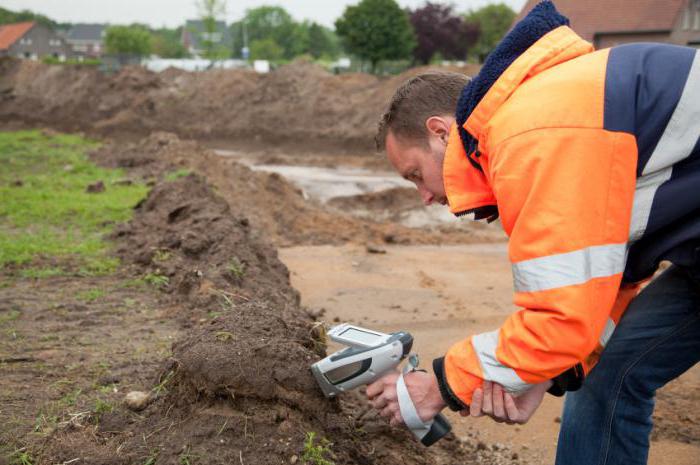In case of interest on the part of the business entity, environmental audit can be a highly effective means to improve the quality of the company from the point of view of environmental protection. Carrying out this procedure illustrates the modern approach of the enterprise to its activities and is a proof of its responsibility for the consequences of this very activity. Today we will consider in detail the environmental audit: the concept, types, methods and other aspects of this procedure. Let's start with the definition.
Environmental audit: what is it?
This term is fully disclosed in the Law on Environmental Protection. It means a comprehensive study of the legal entity's compliance with global environmental protection standards and is accompanied by specific documentation, as well as recommendatory developments to eliminate identified shortcomings.

For business entities, environmental impact assessment (audit) of the environment is carried out by special state or private organizations called environmental auditors. This procedure begins with an analysis of the conformity of production and technological processes with environmental laws and standards of environmental organizations. Then, enterprises are consulted, as well as recommendations are formed to eliminate identified weaknesses in environmental protection. Also, when conducting an environmental audit, an assessment of the environmental impact of the enterprise’s work is carried out and forecasts are made regarding possible damage to nature.
Background
Initially, an environmental audit system was introduced in America and was used as a control measure by industrial production corporations. Recognizing the importance of nature conservation measures, special firms conducted internal audits and assessed the level of harm of a particular type of production activity to nature. In addition, the environmental audit and management bodies provided shareholders and company executives with objective information about the risks of accidents and measures to mitigate these risks.
The foundations of eco-audit were laid by the International Chamber of Commerce (ICC) in 1989. She developed an international document positioning environmental audit as an essential element of self-control of business entities. So this procedure has become an integral part of the complex of environmental protection measures of the enterprise. The ICC document defined the audit of environmental management systems as a voluntary event. This approach appealed to industrialists and industrialists, as they received an effective tool for monitoring the environmental situation and compliance with environmental standards.

The CES - Commission of European Societies - in 1990 proposed its draft compilation of binding rules, which was criticized by the ICC, international organizations and some EU countries. The bulk of the criticism addressed the issue of the potential threat of interference in the production process and the fact that the conclusion of the eco-audit can be opened to the public. CES took criticism into account and in 1991 came up with updated proposals, which formed the basis for the final version of the document. The rules indicated that the environmental audit of the enterprise should form its systematic approach to environmental protection.
In 1993, an EU directive was issued, and the standards and rules of eco-audit were finally approved.Companies that implement all the requirements in their business activities received the right to label their products with a special emblem. In parallel with the implementation of these rules, the British introduced the BS 7750 environmental management standard. In addition, company management standards were developed and implemented in terms of the environmental friendliness of ISO 14000.
Environmental audit objectives
The effectiveness and necessity of environmental management is obvious, because it opens the possibility of:
- rational distribution of material costs of companies based on certain natural factors;
- prevention of risks of financial losses caused by the irrational use of natural resources and environmental pollution;
- building trust with environmental authorities and the local population;
- use of privileges and subsidies for companies that care about environmental protection;
- access to international environmental management standards.

The rules and procedures for preparing environmental audit documentation, the introduction of innovative programs and the use of the data obtained help radically change the country's environmental situation. Most of all it concerns those enterprises and entities that threaten the environment with pollution. A comprehensive environmental audit of the environment is an independent documentary assessment of the management and implementation of all environmental standards, which, if necessary, also involves giving recommendations on adjusting the environmental policy.
Eco audit for business
For business owners, an environmental audit organization helps:
- shaping environmental strategies and policies that are environmentally friendly;
- profitable use of tax benefits using innovative economical technologies;
- minimizing the negative consequences that a production stoppage may entail;
- reducing the risk of emergency situations of environmental pollution;
- establishing relations with local authorities and oversight bodies;
- increasing demand for manufactured goods in the domestic and foreign market;
- well-reasoned attraction of investors.
Kinds
This procedure is classified depending on what control it exercises. Audit can control:
- Compliance with standards. It is made by comparing the environmental status with the provisions of international and state standards. The purpose of the method is to develop measures to bring the environmental situation to standards, as well as increase the efficiency of the company.
- A responsibility. This type of audit involves research on the subject of liability of the enterprise for environmental damage.
- Environmental insurance. It is carried out during the preparation of the insurance contract. It is based on the development of measures to reduce environmental risks. In addition, this type of audit is used in insured events to determine the extent of damage.
- Environmental certification. Used to identify compliance of the certified company with established standards.
- Territory. It is necessary to assess the real state of nature in the enterprise.
- Projection Section Agreements. It is used to carefully study the environmental situation at the enterprise as an object of the proposed investment. In this case, the audit may include analysis of soils, fauna and flora. In addition, experts analyze the level of harm caused by this company to the environment, the cost of disturbed natural objects and the cost of bringing them to normal condition.
There are other types of environmental audits that are applicable to all enterprises that affect the environment and cause harm to it.In addition to production, it relates to construction work, the elimination and conservation of farm buildings and projects for the development of new territories.

In addition, environmental audit activities are divided into two categories: mandatory and initiated.
Mandatory audit is required when:
- fulfillment of obligations that are directly or indirectly related to the environment or environmental activities at the interstate level;
- the initiative of state bodies in order to determine the level of ecological rehabilitation of a certain company or production;
- analysis of environmental factors of regional or national enterprises preparing for privatization processes;
- filing bankruptcy of the enterprise;
- obtaining an environmental insurance policy;
- design and implementation of investment projects based on the conditions specified in the contract.
The initiator of the mandatory eco-audit is the national environmental review body. In addition, this procedure is resorted to if necessary to assess the level of environmental status. As for the proactive audit, it is carried out with the appropriate decision of the enterprise management or other employees with authority. A proactive environmental audit can be carried out both forcibly and voluntarily. Based on this, it is divided into external and internal. In the first case, the procedure is mandatory, and in the second, everything depends on the decision of the management.
EcoAudit Objects
The main objects of environmental audit:
- materials and raw materials;
- technological processes;
- finished products;
- air emissions;
- waste;
- wastewater;
- collective and personal protective equipment;
- regulations on the policy of the enterprise for the protection of labor and nature;
- environmental passport;
- safety precautions and stuff.
Standards
Based on the international standard ISO 14012, each state adopts its own standards for environmental management and audit. International standard and international experience serve as the basis for the creation and implementation of regulatory rules of each individual state, as well as determining the scope of environmental audit management. Inspections are carried out on the basis of ISO requirements, implemented in the details of the company. Responsibility for compliance with these requirements lies with the company, and its compliance is established by audit. Category 1400 standards are valid worldwide and are related to the environmental management system.

This category includes:
- Environmental Management System ISO 1401.
- Key management principles in terms of environmental management (ISO 14004).
- Standards for ensuring the functioning of environmental management (ISO 14015).
- Environmental assessment in territories and industries (ISO 14020).
- The main environmental management standards (ISO 14031).
- The effectiveness of environmental management (ISO 14040).
- Life cycle definition: structure and principles (ISO 14050).
- Dictionary of Environmental Management (ISO 14062).
- The introduction of environmental factors in the development of new products (ISO 14063).
- Exchange of environmental information. Quantification of greenhouse gas emissions into the environment and their reduction (ISO 14064).
Twenty years ago, in the post-Soviet countries, an environmental audit of an enterprise could only be carried out with the help of foreign firms. Currently, the environmental audit system in our latitudes is at the first stages of its development. This is facilitated by the needs of enterprises wishing to enter the international market. Having received a certificate of compliance with the requirements of ISO 14000, you can count on the competitiveness of the product in foreign markets.
Procedure
Conducting an environmental audit solves the problem of assessing the compliance of the enterprise with the standards established for such facilities.This procedure is simple, affordable and understandable for non-sophisticated people. The organization of an environmental audit consists of several stages. The first is preparatory. It consists of:
- identification of processes of production and economic activity;
- determining the goals and objectives of the economic policy of the enterprise;
- setting the level of competence of the analysis, its stages and scale;
- determination of the procedural order of environmental audit.

Then the following audit steps follow:
- verification of primary documents, registration books and other documentation reflecting the current success of the company in environmental activities;
- obtaining objective data from various sources (often includes a survey of employees);
- visual inspection of the object and analysis of its condition;
- environmental research using special devices;
- formation of recommendatory proposals aimed at improving the efficiency of environmental processes and conscientious spending of environmental resources.
Audit report
At the end of the analysis, the managers of the audited company receive the results of the audit in the form of a conclusion. This act is official, it is certified by the signature of the auditor representing the environmental audit center and the seal of the company under study. In the document you can find expert conclusions on the compliance of documentation and the principles of the enterprise with legislative environmental standards.
The environmental audit report is issued in a standard form and includes:
- Conclusion based on the results of the audit as to whether the environmental policy of the company complies with the applicable requirements, laws and regulations.
- Analysis of the status of business and financial reporting documents, the feasibility of using financial funds allocated for nature conservation, and the accuracy of environmental payments.
- An assessment of the impact of the activities of the enterprise under study on the state of the environment, the region’s ecology and the health of employees Analysis of data on the presence and extent of emissions of harmful substances, the limitation of which is stipulated by international agreements.
- The results of the analysis of the growth of production volumes taking into account changes in the amount of pollutants in the natural environment. As well as the results of the analysis of the consumption of energy and natural resources.
- Comparison results of the studied enterprise with similar state enterprises for all the most important indicators of environmental activity.
- An assessment of the threats that may arise due to emergency situations, the correctness of the preparation of plans for the elimination of emergency foci and the inactive consequences of the accident, the availability of material resources necessary to eliminate emergency situations.
- Conclusion regarding the competence and qualifications of the company’s employees responsible for environmental protection, as well as the availability of technical equipment necessary for independent quality control of the state of the enterprise from the point of view of environmental friendliness.
- Conclusion on the degree of awareness of company leaders and the degree of environmental pollution in the process of economic and industrial activity. Conclusion on the availability and effectiveness of motivational programs aimed at protecting nature, as well as reducing material consumption and energy costs of production.
The vastness of the business aspects that are considered in the conclusion once again underscores the seriousness of a procedure such as environmental audit. The example of the composition of the conclusion given above is unified, but may vary depending on the specifics of the enterprise.
Activity regulation
Activities in this area are subject to state regulation. The Ministry of Nature acts as a special authorized state body for regulating environmental audits. Its main functions are:
- The publication of regulatory acts, according to which the regulation of environmental audit is carried out.
- Organization of certification, training and raising the level of auditors, as well as licensing of audit activities.
- Organization of a system for monitoring compliance with licensing requirements by individual auditors and audit organizations.
- Development of a reporting procedure for audit organizations and individual auditors to an authorized state person.
- Introduction of state registers of environmental auditors, as well as audit organizations and training centers.

An environmental audit council should be functioning under the Ministry of Nature, participating in the preparation and review of the main documents and draft decisions of the authorized bodies, as well as developing the rules for the activities of auditors. Thus, the introduction of auditing in the practice of environmental protection contributes to the solution of a whole range of problems related to nature conservation by business entities. Expanding the use of environmental auditing stimulates environmental activities, contributes to the creation of a methodological base for assessing the degree of environmental hazard, the magnitude of damage, and so on. Without the proper organization of activities in the field of environmental audit, environmental certification and the creation of an economic and legal system of environmental insurance are difficult. By introducing environmental audit methods into the practice of enterprises, it is possible to ensure a more efficient functioning of the environmental management system.
Conclusion
Today we met with such a concept as environmental audit. Having examined the definition, types, conduct, regulation and tasks of an environmental audit, we can conclude that this procedure plays an important role in the environmental policy of the state, especially in conditions of constantly deteriorating environmental conditions.